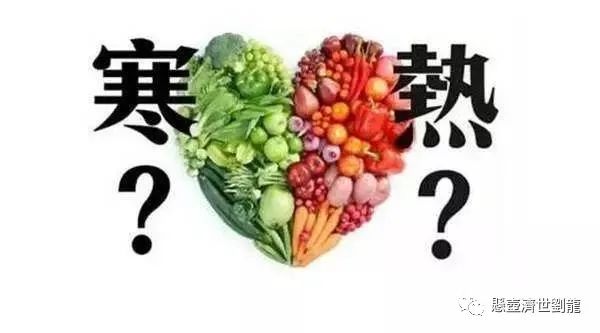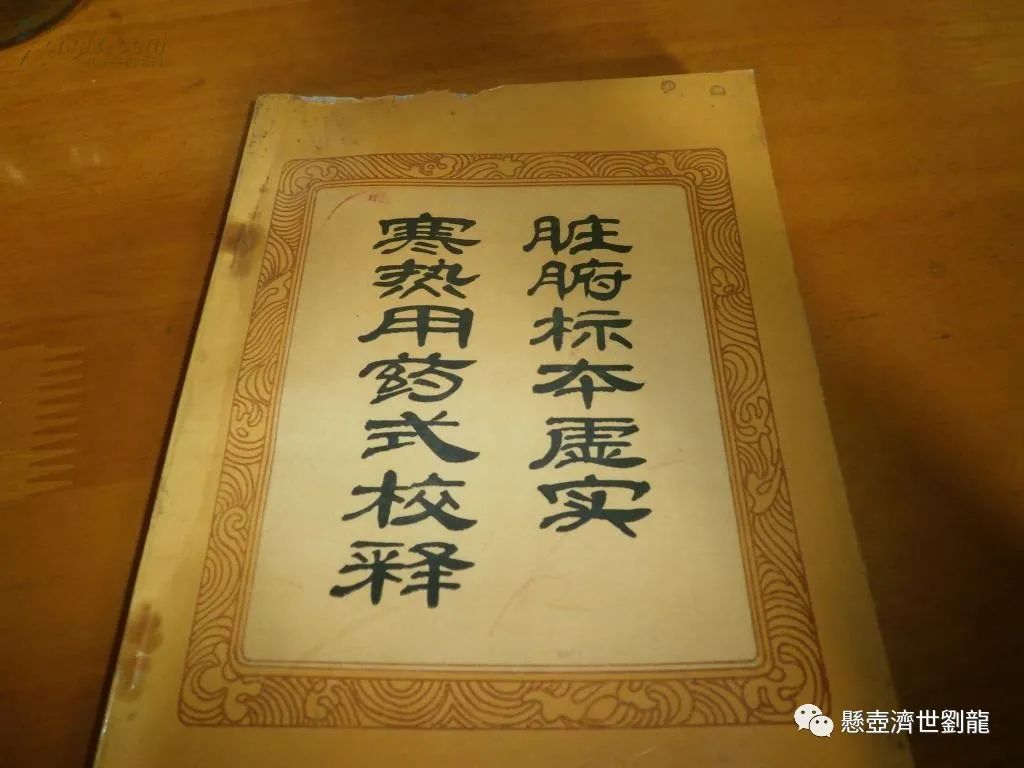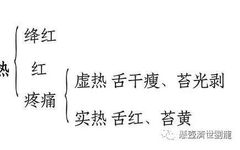
The nature of diseases is not merely defined by cold or heat. However, the “Su Wen: On the Correspondence of Yin and Yang” states: “Water and fire are the signs of yin and yang.” The “Jing Yue Quan Shu: Chuan Zhong Lu” also states: “Cold and heat are the transformations of yin and yang.” The “Lei Jing: Disease Categories” further states: “When water and fire lose their harmony, it results in cold and heat.” Since cold and heat prominently reflect the excess and deficiency of yin and yang in the body, as well as the nature of pathogenic factors being yin or yang, and since yin and yang fundamentally determine the nature of diseases, it can be said that cold and heat are the guiding principles for differentiating the nature of diseases.
Pathogenic factors can be divided into yang and yin pathogens, while the righteous qi can be divided into yang qi and yin fluids. Yang pathogens can lead to an excess of yang qi and damage to yin fluids, or a deficiency of yin fluids and an excess of yang qi, both of which can manifest as heat syndromes; yin pathogens can easily lead to an excess of yin qi and damage to yang qi, or a deficiency of yang qi and an excess of internal cold, both of which can manifest as cold syndromes. The saying “Excess of yang leads to heat, excess of yin leads to cold” (from “Su Wen: On the Correspondence of Yin and Yang”) and “Deficiency of yang leads to external cold, deficiency of yin leads to internal heat” (from “Su Wen: On Regulating the Menstrual Cycle”) illustrates this principle. This also indicates that the understanding of cold and heat syndromes derived from analyzing the yin and yang attributes of pathogenic factors and the excess and deficiency of the body’s yin and yang is fundamentally consistent.
Chills (and aversion to cold), fever, and the cold and heat syndromes of the eight principles are related yet distinct; they should not be confused. Chills and fever are merely phenomena of the disease, while the cold and heat manifestations of the disease can be true or false, whereas cold and heat syndromes are judgments made about the essence of the disease.

Experiencing cold pathogens, or yang deficiency with an excess of yin, leads to symptoms characterized by cold and coolness.
Since an excess of yin can manifest as cold symptoms, and yang deficiency can also manifest as cold symptoms, cold syndromes can be divided into excess cold and deficiency cold.
Clinical Manifestations: Common symptoms include aversion to cold, fear of cold, cold pain, preference for warmth, lack of thirst with a bland taste in the mouth, cold limbs curled up, clear and thin phlegm, saliva, and nasal discharge, clear and long urination, loose stools, pale complexion, pale tongue, white and moist coating, and tight or slow pulse.
Syndrome Analysis: Caused by the invasion of cold pathogens or excessive consumption of cold and raw foods, the onset is sudden, and those with a strong constitution often present with excess cold; due to internal injury from prolonged illness, weakness of yang qi, and an excess of yin cold, those with a weak constitution often present with deficiency cold. When cold pathogens invade the exterior, it is often a case of exterior cold; when cold pathogens affect the internal organs, or due to yang deficiency with an excess of yin, it is often a case of interior cold.
Due to the obstruction of cold pathogens, yang qi becomes stagnant, or yang qi is weak, and internal yin cold prevails, leading to symptoms such as aversion to cold, fear of cold, cold limbs, cold pain, preference for warmth, and curling up. Cold does not dissipate water, and body fluids are not harmed, hence there is no thirst, and secretions such as phlegm, saliva, nasal discharge, and urine are clear and cold, with a white and moist tongue coating.
Referring to the invasion of heat pathogens, or the hyperactivity of yang qi in the internal organs, or yin deficiency with yang hyperactivity, leading to symptoms characterized by warmth and heat.
Since an excess of yang can manifest as heat symptoms, and yin deficiency can also manifest as heat symptoms, heat syndromes can be divided into excess heat and deficiency heat.
Clinical Manifestations: Common symptoms include fever, aversion to heat with a preference for coolness, thirst with a desire to drink, red face, restlessness, yellow and thick phlegm and nasal discharge, short and yellow urination, dry and hard stools, red tongue, yellow and dry coating with little moisture, and rapid pulse.
Syndrome Analysis: Caused by external invasion of fire and heat pathogens, or excessive consumption of spicy and warming foods, or excessive internal yang heat, the disease progresses rapidly, and those with a strong constitution often present with excess heat; due to internal injury from prolonged illness, depletion of yin fluids, and hyperactivity of yang qi, those with a weak constitution often present with deficiency heat. When wind-heat pathogens invade the exterior, it is often a case of exterior heat; when heat pathogens are predominant in the internal organs, or due to yin deficiency with yang hyperactivity, it is often a case of interior heat.
Due to the predominance of yang heat, body fluids are consumed, or due to deficiency of yin fluids leading to hyperactivity of yang qi, symptoms such as fever, aversion to heat, red face, restlessness, red tongue, yellow coating, and rapid pulse are observed; heat injures yin fluids, leading to symptoms such as thirst with a desire to drink, yellow and thick phlegm and nasal discharge, short and yellow urination, dry and hard stools, and dry tongue with little moisture.

Cold and heat syndromes reflect the excess and deficiency of yin and yang in the body and are the main manifestations of the nature of diseases. Therefore, a comprehensive observation of all disease manifestations is necessary, especially aversion to cold and fever, preferences and aversions to cold and heat, thirst or lack thereof, complexion (red or pale), temperature of the limbs, urination and defecation, tongue appearance, and pulse are important bases for differentiating cold and heat syndromes. See Table 7-1.
The “Medical Insights: Differentiation of Cold and Heat, Deficiency and Excess, Interior and Exterior, Yin and Yang” states: “The cold and heat of a disease is entirely based on thirst and lack of thirst, whether water is consumed or not, preference for hot or cold food, restlessness or reversal of qi, the length and color of urination, the consistency of stools, and the pulse being slow or rapid. If there is thirst and the ability to consume water, preference for cold food, restlessness, short and red urination, and hard stools, this indicates heat; if there is no thirst, or false thirst with an inability to consume water, preference for hot soup, cold hands and feet, clear and long urination, loose stools, and a slow pulse, this indicates cold.” This can serve as a reference for differentiating cold and heat syndromes.
Differentiation of Cold and Heat Syndromes
|
Cold Syndrome |
Heat Syndrome |
|
|
Preference for cold and heat |
Aversion to cold, preference for warmth |
Aversion to heat, preference for coolness |
|
Thirst |
No thirst |
Thirst with a preference for cold drinks |
|
Complexion |
Pale |
Red |
|
Limbs |
Cold |
Hot |
|
Stools |
Loose |
Dry and hard |
|
Urination |
Clear and long |
Short and red |
|
Tongue Appearance |
Pale tongue with white and moist coating |
Red tongue with yellow coating |
|
Pulse |
Slow or tight |
Rapid |
|
Cold Syndrome |
Heat Syndrome |
|
|
Preference for cold and heat |
Aversion to cold, preference for warmth |
Aversion to heat, preference for coolness |
|
Thirst |
No thirst |
Thirst with a preference for cold drinks |
|
Complexion |
Pale |
Red |
|
Limbs |
Cold |
Hot |
|
Stools |
Loose |
Dry and hard |
|
Urination |
Clear and long |
Short and red |
|
Tongue Appearance |
Pale tongue with white and moist coating |
Red tongue with yellow coating |
|
Pulse |
Slow or tight |
Rapid |

Deficiency and excess are two guiding principles for differentiating the strength and weakness of pathogenic and righteous qi. They primarily reflect the strength of the righteous qi and the weakness of the pathogenic qi during the disease process.
The “Su Wen: On the Discussion of Deficiency and Excess” states: “When pathogenic qi is strong, it is excess; when vital essence is depleted, it is deficiency.” The “Jing Yue Quan Shu: Chuan Zhong Lu” also states: “Deficiency and excess refer to surplus and insufficiency.” Excess primarily refers to the predominance of pathogenic qi, while deficiency primarily refers to the insufficiency of righteous qi. Therefore, deficiency and excess are used to summarize and differentiate the strength and weakness of pathogenic and righteous qi.
Since the struggle between pathogenic and righteous qi is the fundamental contradiction in the disease process, the excess and deficiency of yin and yang, as well as the resulting cold and heat syndromes, also have a distinction between deficiency and excess. Therefore, analyzing the relationship of deficiency and excess in the disease process is a basic requirement for differentiation. Thus, the “Su Wen: On Regulating the Menstrual Cycle” states, “All diseases have deficiency and excess.” Through the differentiation of deficiency and excess, one can understand the strength and weakness of the pathogenic and righteous qi, providing a basis for treatment. Excess syndromes should be attacked, while deficiency syndromes should be tonified. Accurate differentiation of deficiency and excess allows for appropriate treatment, avoiding the errors of treating excess as deficiency and vice versa.
Excess Syndrome:
Refers to the body’s response to external pathogens, or the imbalance of yin, yang, qi, and blood during the disease process, with the accumulation of pathological products in the body, characterized by the predominance of pathogenic qi and the absence of deficiency of righteous qi, manifesting as various symptoms with characteristics of surplus, hyperactivity, and accumulation.
Clinical Manifestations: Due to differences in the nature of the invading pathogens, the pathological factors involved, and the sites of invasion and accumulation, the manifestations of excess syndrome can vary widely, making it difficult to represent excess syndrome with a few symptoms. Generally, acute and severe cases are often excess syndromes, and those with a strong constitution often present with excess syndromes. Thus, the “Nan Jing: Difficulties 48” states, “Those who enter are excess,” and “Those who are acute are excess.” The “Lei Jing: Disease Categories” also states, “All diseases that invade from the outside tend to have excess, such as those caused by the six qi or dietary injuries.”
Syndrome Analysis: The range of excess syndromes is very broad, and the clinical manifestations are quite complex. The main pathological mechanisms can be summarized into two aspects: first, the invasion of pathogenic factors such as wind, cold, heat, dampness, dryness, fire, epidemics, and toxins, leading to a vigorous response of the righteous qi against the pathogens, resulting in prominent symptoms of cold and heat, severe pain, or significant vomiting, diarrhea, cough, and shortness of breath, as well as obstructed urination and defecation, with a strong pulse; second, dysfunction of the internal organs, leading to stagnation of qi and the formation of pathological substances such as phlegm, fluids, dampness, pus, blood stasis, and food stagnation, which accumulate in the body. Therefore, pathogenic factors such as wind, cold, heat, dampness, dryness, fire, and toxins, as well as pathological changes such as phlegm obstruction, fluid retention, water overflow, food accumulation, parasitic accumulation, qi stagnation, blood stasis, and pus toxicity generally fall under the category of excess syndromes.
Deficiency Syndrome:
Refers to the deficiency of the body’s yin, yang, qi, blood, body fluids, and essence, with the absence of pathogenic qi, manifesting as various symptoms characterized by insufficiency, relaxation, and decline.
Clinical Manifestations: The manifestations of various deficiency syndromes are extremely inconsistent, and the manifestations of deficiency syndromes in different organs are even more varied, making it difficult to summarize them with a few symptoms. Generally, chronic and slow cases tend to be deficiency syndromes, and those with excessive depletion often present with deficiency syndromes. Thus, the “Nan Jing: Difficulties 48” states, “Those who exit are deficiency,” and “Those who are slow are deficiency.” The “Lei Jing: Disease Categories” also states, “Internal diseases often have insufficiency, such as those caused by emotional distress, overwork, and depletion of essence.”
Syndrome Analysis: The causes and mechanisms leading to deficiency syndromes can arise from congenital insufficiency, but are mainly due to acquired imbalances and depletion from diseases, such as dietary imbalances leading to insufficient nourishment of qi and blood; excessive thinking, sadness, fear, and overwork depleting qi and blood; irregular sexual activity depleting kidney essence; prolonged illness without treatment or improper treatment damaging righteous qi; excessive vomiting, diarrhea, sweating, bleeding, and loss of essence leading to depletion of yin fluids, qi, and blood, all of which can lead to deficiency syndromes.
Key Points for Differentiating Deficiency and Excess Syndromes:
Deficiency and excess syndromes can primarily be differentiated based on the course of the disease, severity, constitution, symptoms, tongue, and pulse. Key points for differentiation are shown in Table 7-2.
Differentiation of Deficiency and Excess Syndromes
|
Deficiency Syndrome |
Excess Syndrome |
|
|
Course of Disease |
Long (Chronic) |
Short (Acute) |
|
Constitution |
Often Weak |
Often Strong |
|
Mental State |
Listless |
Excited |
|
Voice and Breathing |
Low voice and weak breathing |
High voice and strong breathing |
|
Pain |
Preference for pressure |
Resistance to pressure |
|
Chest and Abdominal Distension |
No pain upon pressure, distension reduces with pressure |
Pain upon pressure, distension does not reduce with pressure |
|
Fever |
Five hearts heat, slight fever in the afternoon |
Strong fever |
|
Aversion to Cold |
Fear of cold, relief with clothing or heat |
Aversion to cold, no relief with clothing or heat |
|
Tongue Appearance |
Tender texture, little or no coating |
Old texture, thick and greasy coating |
|
Pulse |
Weak |
Strong |


Consultation WeChat ID

